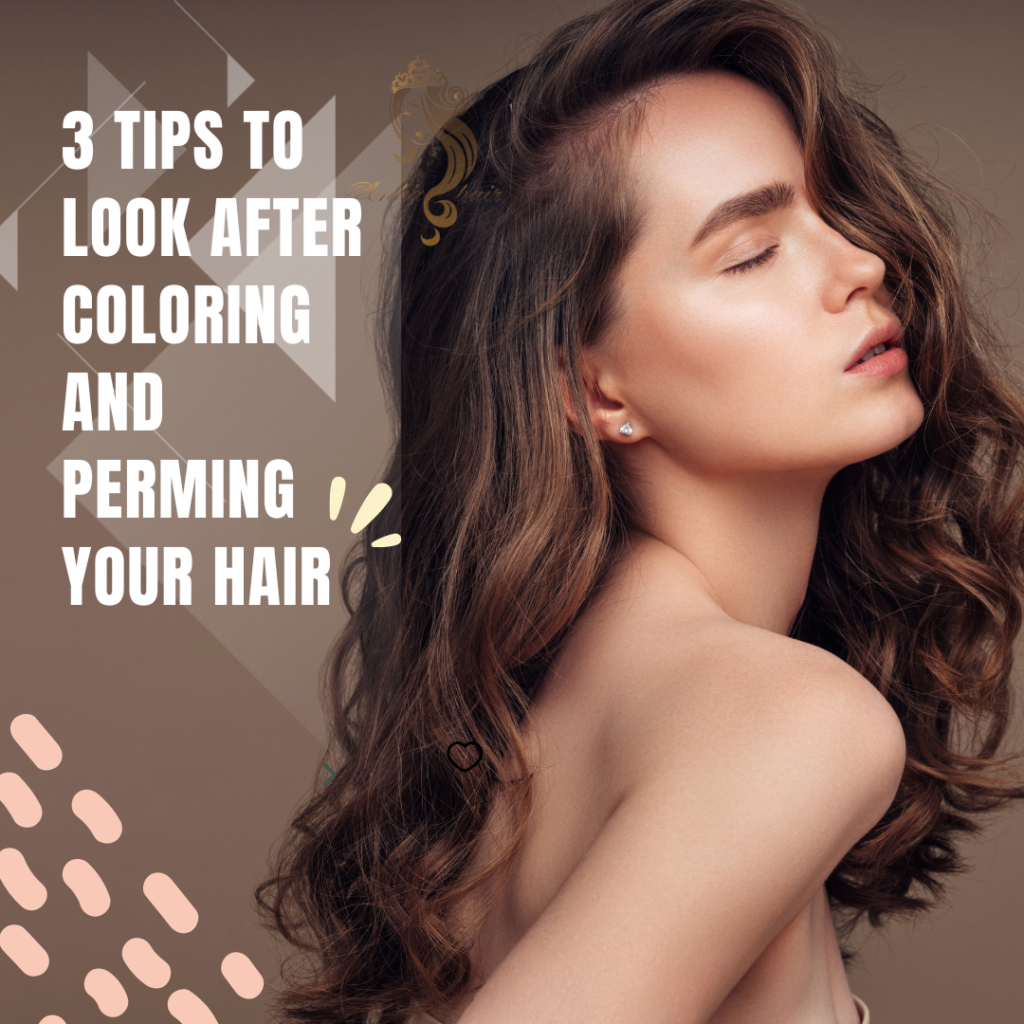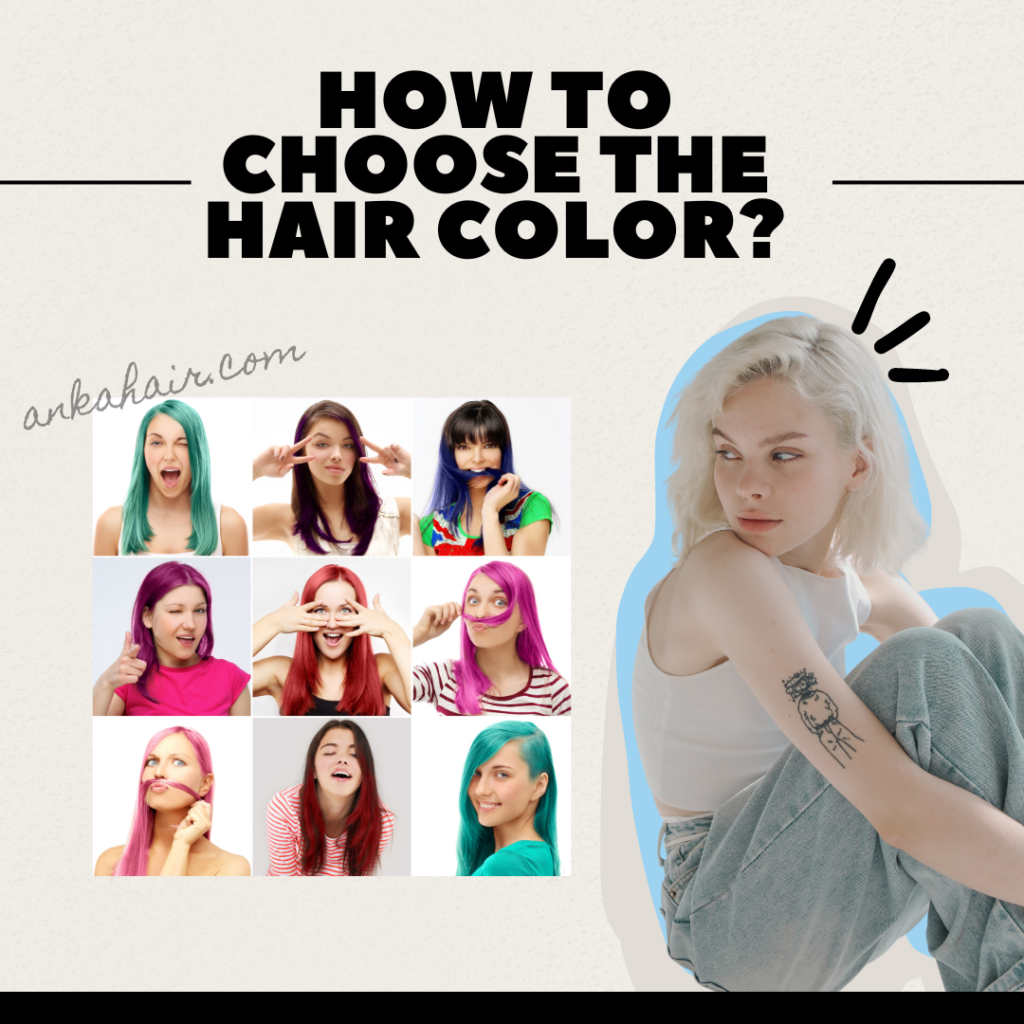When it comes to transforming our hair, whether through perming or coloring, there’s an intricate dance of timing and sequence that must be executed with precision. In this comprehensive guide, we will delve into the delicate balance of perming and coloring, shedding light on the crucial need to understand the correct sequence and timing for these hair treatments.The of perming and coloring not only holds the power to revamp our look but also reflects our dedication to maintaining healthy, vibrant hair. Stay tuned for the next part, where we will explore the risks and considerations of perming and coloring on the same day.
Table of Contents
I. Should I Color and Perm My Hair on the Same Day?
As perming and dyeing hair are two distinct processes, they should never be combined. It is best to wait at least seven days, and perhaps up to two weeks, before coloring your hair after perming. After getting a perm, it is advised that to wait at least one to two weeks. You also can seek guidance on this from your hairstylist. Your stylist will be able to provide you with appropriate recommendations regarding the texture and condition of your hair because they are very knowledgeable about it. The combination of chemicals used in both processes can lead to hair damage and scalp irritation. It is essential to consider the potential damage to the hair structure and scalp before deciding to undergo these treatments simultaneously.
Proper care is also crucial after these treatments to maintain the natural texture of your hair and prevent issues such as dryness, split ends, and frizziness. Taking these precautions can help you achieve the desired results while keeping your hair healthy and vibrant.
II. Which Treatment Should Be Done First – Perming Or Hair Coloring?
The decision to perm before coloring or vice versa depends on individual hair type and condition. Perming before coloring may result in a more predictable outcome for some, while coloring before perming might be suitable for others. It is important to weigh the advantages and disadvantages based on your hair’s specific needs.
Perming before coloring may result in a more predictable outcome for some individuals. This is because permed hair might have a more porous structure, allowing for better absorption of hair color. However, perming before coloring could potentially lead to damage if not done carefully, as the hair has already undergone a chemical process.
On the other hand, coloring before perming may be suitable for those who prioritize the condition and health of their hair. By coloring the hair before perming, you can avoid the risk of overloading the hair with multiple chemical treatments in a short period.
Ultimately, the sequence depends on individual hair type, condition, and desired outcome. Consulting a professional stylist or colorist is crucial in determining the appropriate sequence based on your specific hair needs. They can provide personalized recommendations to achieve the desired look while maintaining the health and integrity of your hair.

III. 3 Tips to Look After Coloring and Perming Your Hair
Because perming and coloring need a variety of products and tools, they might cause harm to your hair. But don’t be distressed. Take good care of your hair to prevent harm from occurring with our three simple tips as below:
1. Use suitable hair care products: Choose hair care products specifically designed for colored and permed hair. These products will help maintain moisture and protect the hair’s structure, keeping it healthy and soft.
2. Minimize damage and preserve color longevity: Employ techniques such as reducing the use of hair dryers, avoiding direct sunlight, and staying away from alcohol-containing products to preserve the color of the hair for a longer duration.
3. Regular consultations with an expert: Visit your hairstylist regularly to assess and receive advice on caring for your hair after coloring and perming. Expert guidance will help you maintain the beauty and health of your hair.

VI. How To Choose The Hair Color?
Deciding what color to go for your hair, it’s essential to consider factors such as skin tone, natural hair color, and personal style. You can consult with a professional stylist and colorist can provide valuable insights and ensure that the chosen hair color complements your overall look. Don’t be afraid to experiment with hair colors, but always remember that careful consideration in choosing a hair color will help you shine in every situation.
If you want to change your hair color without affecting your scalp health, you might consider using hair extensions with various ranges of color and texture. You can find more information about unlimited hair styles here.
In conclusion, perming and coloring hair require careful consideration to maintain healthy and beautiful hair. Understanding the sequence, potential risks, and proper aftercare is essential to achieve the desired results while keeping your hair’s health a top priority.



![Wendy [English]](https://ankahair.com/wp-content/uploads/z6058510704907_3129b1fbac33d8a26fab41030946122f.jpg)
![Hannah [English]](https://ankahair.com/wp-content/uploads/WhatsApp-Image-2024-10-15-at-11.02.52-150x150.jpeg)
![Harry [English]](https://ankahair.com/wp-content/uploads/z5931501956796_5e7cab9db0516d3858ece1dad95cc4e4-150x150.jpg)
![Gina [English]](https://ankahair.com/wp-content/uploads/WhatsApp-Image-2024-10-15-at-11.00.23-150x150.jpeg)
![Kavin [English]](https://ankahair.com/wp-content/uploads/Cheiens-150x150.jpg)
![Ellie [English]](https://ankahair.com/wp-content/uploads/Anh-WhatsApp-2024-11-22-luc-15.14.57_0bc67535.jpg)
![Danny [English]](https://ankahair.com/wp-content/uploads/WhatsApp-Image-2024-09-12-at-09.50.38-150x150.jpeg)
![Sarah [English]](https://ankahair.com/wp-content/uploads/Thiet-ke-chua-co-ten-2.jpg)
![Helen [English]](https://ankahair.com/wp-content/uploads/z5932531142190_b3987c9487c317035d38bccfe470682f.jpg)
![Kami [English]](https://ankahair.com/wp-content/uploads/Thiet-ke-chua-co-ten-3.jpg)
![Mimi [Français]](https://ankahair.com/wp-content/uploads/WhatsApp-Image-2023-04-14-at-15.48.06.jpeg)
![Jenny [English]](https://ankahair.com/wp-content/uploads/IMG_20150423_104647.jpg)
![Sveta [Russian, English]](https://ankahair.com/wp-content/uploads/IMG_8318.jpg)
![Katia [Russia, English]](https://ankahair.com/wp-content/uploads/Thiet-ke-chua-co-ten-1-2.jpg)
![Karina [Portuguese,English]](https://ankahair.com/wp-content/uploads/Thiet-ke-chua-co-ten-1-1.jpg)
![Rosa [English]](https://ankahair.com/wp-content/uploads/Thiet-ke-chua-co-ten-4.jpg)
![Sophia [English]](https://ankahair.com/wp-content/uploads/8.jpg)
![Amy [English]](https://ankahair.com/wp-content/uploads/Them-tieu-de.jpg)
![Jesse [English]](https://ankahair.com/wp-content/uploads/9.jpg)
![Alice [English]](https://ankahair.com/wp-content/uploads/z3004302860179_951e928914aeb509a9a72897ed6d2e4c.jpg)
![Anna [English]](https://ankahair.com/wp-content/uploads/Them-tieu-de-3.jpg)
![Lily [English]](https://ankahair.com/wp-content/uploads/Them-tieu-de-1.jpg)

